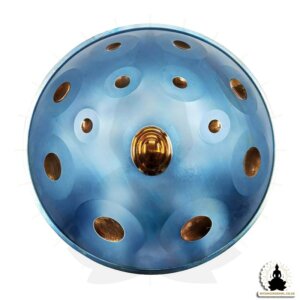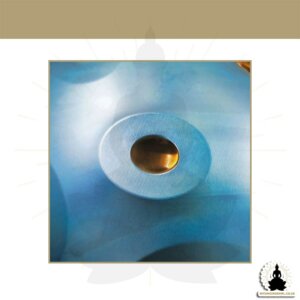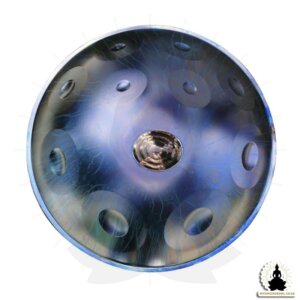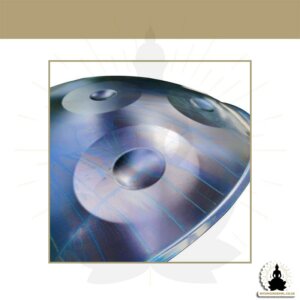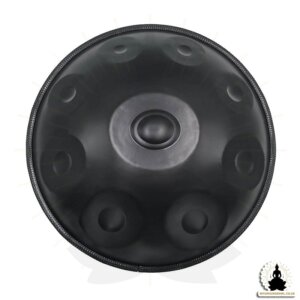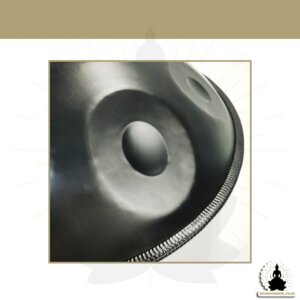Handpan
How do you properly maintain a handpan?
Now that you are (finally) the happy owner of a superb handpan, one question now springs to mind: what do I have to do to keep it in good condition?
The good news is that maintenance of a handpan isn’t very difficult. Let’s not forget that it is a metal object made to last, and not just a fashionable gadget which will need to be replaced every six months.
That being said, easy maintenance does not mean that you have nothing to do… So let’s get started! We’ll tell you all you need to know so that your handpan lasts a lifetime!
Cleaning your handpan
It’s handpan maintenance 101. This may seem obvious, but how many handpans have quickly deteriorated because they are never cleaned?
Unfortunately, too many…
Wipe the handpan
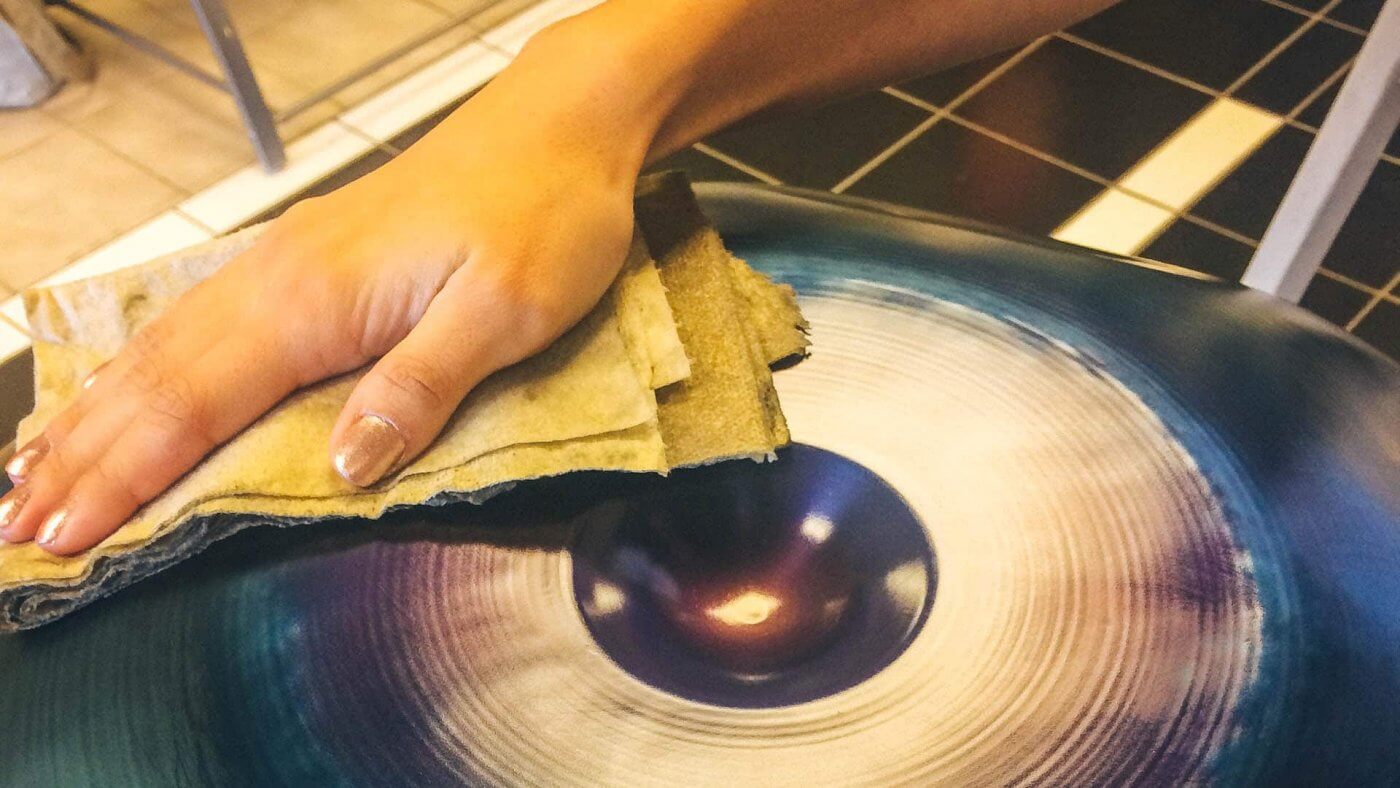
This should be done each time you play your instrument. That’s right, each time. If you forget once, it’s not worth getting up in the middle of the night to clean it, but it is important to get into a good habit. It only takes two minutes and indefinitely prolongs the life of your handpan.
To do so, using a dry microfiber cloth is best. But you can also do this with a simple (clean!) cotton t-shirt if you have nothing better to hand.
The goal is to eliminate all traces of grease and salt minerals left on the instrument from our fingers. Even washing our hands twenty times a day, our skin continuously secretes sebum (if it didn’t, we would have dry skin like old parchment) and this is transferred to the handpan.
Knowing that there are also other factors such as dust, humidity, grains of sand, pollen… which can transfer onto the surface, we quickly find a mixture- invisible to the naked eye- which can quickly attack the instrument’s coating.
If you only do one thing to maintain your handpan, it must be this: clean it each time you play it!
Read also : How do you learn to play the handpan?
Wipe the handpan with alcohol
A process that should be done roughly every two or three months, according to how you use your instrument. The objective is to remove ALL traces that might still be present after the many dry cloth cleans done after every use..
Purists will tell you that cleaning with alcohol should be done every week, and it is sure that, if you can, it is indeed better to do so. But if you have a good quality instrument, and you take care of it, there should be no problem in doing this less frequently.
By contrast, are you sure that you are using a clean, dry (and new?) microfiber cloth with the alcohol disinfectant. Take your time really rubbing the outside, the edges, and also the inside. It is better to repeat this process less frequently, but to do it well, rather than to botch it every week. It is rare that the first rust spots appear in the middle, where you always rub well… It is the forgotten corners, that we pass over quickly, which pose the most problems.
PLEASE NOTE : If you have just oiled your handpan, alcohol will remove a large portion of this… It may be a good idea to carry out all maintenance steps at the same time, but in this case, think about cleaning your instrument with alcohol before oiling it.
Prevent rust from appearing
Accidental drops and clueless friends who ask what they can get out of a handpan with the help of a hammer, rust is your instrument’s enemy number one. To protect it, there are two very simple principles to follow.
Properly store your instrument
Covers are available to protect your instrument during transport, but most importantly for storing it at home. The handpan has to be stored in open air, in a mostly dry room (avoid the bathroom or kitchen).
If you live near the sea, double down on precautions: humid air is unclean and is not your instrument’s friend.
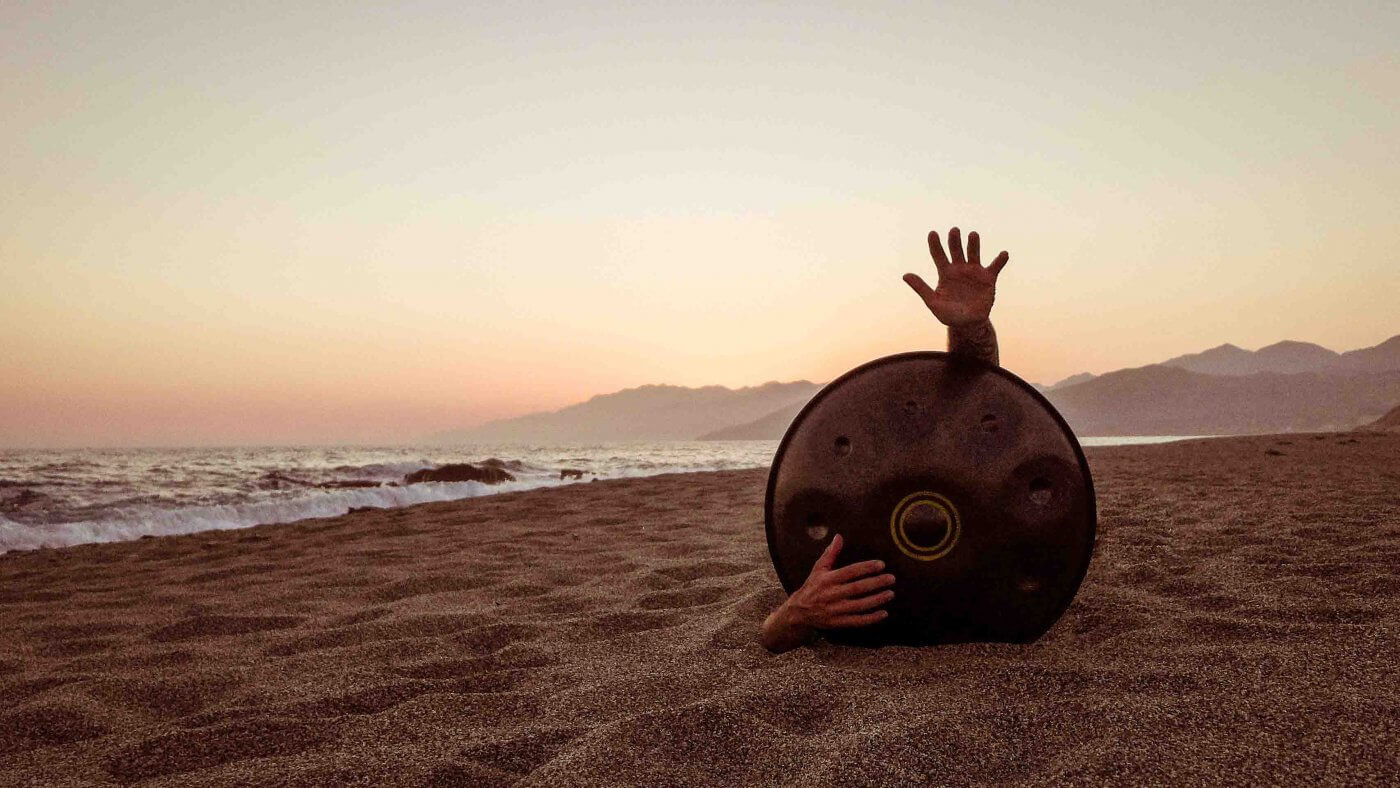
Protect your handpan
It is good to regularly apply a protective oil to your instrument to add extra protection against the elements. The frequency of this treatment largely depends on where you live. In the Atacama desert, where humidity is close to zero, you can do this once a year, whereas on the Faroe Islands, where rain mixes with the ocean’s humidity, you will have to carry out maintenance tasks approximately every month.
Remove rust from the handpan
Despite all the pains you’ve taken, your instrument has decided to go against you and has started to rust!
The good news is that rust is purely an aesthetic problem which has no effect on the sound. Unless it spreads over the whole of the instrument, which starts to fall apart, but if this is the case then you are holding a relic in your hands, not a handpan!
The second bit of good news: it is possible to remove a rust patch. On the other hand, it is likely that this process will affect the instrument’s external appearance. Again, the sound remains the same, but the aesthetics are not necessarily the most pleasant.
Small rust spots
If there are only a few small rust spots on your handpan, the most simple solution is to take the green side of a sponge (the scrubbing side) and rub gently to remove the rust without destroying the entire surface.
The rust has spread
So you’ve left your handpan by the sea for a few months, and the rust spots have grown bigger… Removing them with a sponge is still possible, but you risk damaging the instrument’s surface. Thus you should use a commercial rust-proof cloth, which works wonderfully well, but can react with the surface treatment, which will result in leaving a different colour mark. So please use caution!
PLEASE NOTE : Avoid “exotic” solutions and your grandmother’s recipes. Rubbing your instrument with a potato or an onion is absolutely useless, as well as citric or hydrochloric acids… These are potentially dangerous products.
What doesn’t damage your handpan

Here, we have decided to debunk some false rumours that we have found on some websites:
- A handpan is not afraid of being left in the sun. No, your instrument will not become warped if it is left in the sun. If this is the case, then this is because you have been conned and have bought a plastic instrument! Even if it is 50 degrees, it will not melt in the sun.
- In that same vein, your handpan is not particularly bothered by temperature variations, at least those that happen in normal use. If you live in Siberia, where it is -40°c, and you usually pop your instrument in the oven before playing it in a blizzard, it is possible that in the long run, the sound can become worse.
Joking aside, remember that your handpan is made out of metal, and it is perfectly stable in temperatures ranging from -30°c to 50 °c !
Always ask the manufacturer
An extremely important point. The instructions given are general and valid for all models, but each handpan manufacturer uses different materials and treatments. This can have an impact on the frequency of maintenance required, as well as the nature of the products to be used.
Typically, a stainless steel handpan requires less maintenance, because it rusts a lot less. On the other hand, a porous steel handpan should not be oiled too often or heavily, at the risk that the metal will become soaked (which will have a detrimental impact on the sound).
In fact, when it comes to oil, each manufacturer recommends a very specific type. Know that this is not (only) so that you buy from them, but because each oil has a different composition, more or less suitable to the metal and the treatment used.
Using a different formula because “all oils are the same, anyway” or “a friend used this and they told me that it works really well on his handpan” can have disastrous consequences on your instrument’s lifespan… Don’t say we didn’t warn you!
The last word
In the end, taking care of your handpan isn’t rocket science and doesn’t take much time. It just requires attention, and to take a few minutes from time to time so that your grandchildren will be able to play your instrument in years to come.


